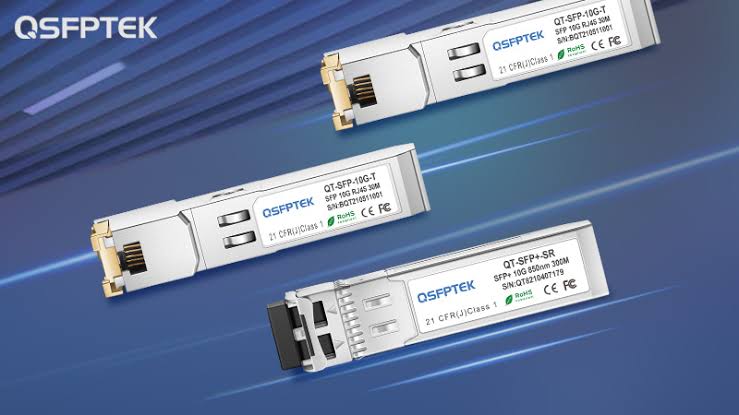Introduction
In the fast-paced world of networking, where efficiency and speed are paramount, 1G SFP (Small Form-Factor Pluggable) optical modules have emerged as crucial components. These miniature devices play a pivotal role in enabling high-speed data transmission through fiber optic communication. In this article, we delve into the inner workings of 1G SFP modules, explore their features and benefits, discuss the different types available, and examine their diverse applications.
How Does a 1G SFP Module Work? Exploring the Inner Workings
At the heart of the 1G SFP module lies advanced transceiver technology. This technology facilitates the seamless transmission of data through fiber optic cables. The data transmission process involves the use of light-emitting diodes (LEDs) or laser diodes (LDs) to convert electrical signals into optical signals. These optical signals then travel through the fiber optic cables, ensuring rapid and efficient communication.
The utilization of light for data transmission brings notable advantages. Light signals experience minimal interference, allowing for higher data transfer rates and longer-distance capabilities. This makes 1G SFP modules particularly adept at handling the demands of modern networking environments.
The Features and Benefits of 1G SFP Optical Modules
One of the standout features of 1G SFP modules is their high-speed data transfer capability. These modules can handle data rates of up to 1 gigabit per second, making them ideal for scenarios where rapid data transmission is essential. Moreover, their hot-pluggable design allows for effortless installation and replacement without interrupting network operations. This feature is particularly valuable in situations where uptime is critical.
The compact size of 1G SFP modules is another noteworthy attribute. Their small form factor provides flexibility in deployment, making them suitable for installations with space constraints. The ability to easily integrate these modules into existing setups enhances the scalability and adaptability of networks.
An Introduction to Different Types of 1G SFP Modules in the Market
1G SFP modules come in various types, catering to different networking requirements. One crucial distinction is the compatibility with single-mode or multimode fibers. Single-mode modules are designed for long-distance communication, making them suitable for scenarios where data needs to traverse extended distances. On the other hand, multimode modules are optimal for shorter distances within data centers or local area networks.
Another factor to consider is the distance capabilities of these modules. Different modules support varying transmission distances, ranging from a few hundred meters to several kilometers. Understanding these specifications is essential for selecting the right module for a specific application. Read this article to learn more about: How Many Types of SFP Transceivers Do You Know?
The Various Applications and Use Cases for 1G SFP Optical Modules
The versatility of 1G SFP modules is evident in their wide range of applications. These modules find frequent deployment in network switches, where their high-speed data transfer capabilities contribute to efficient data routing. In data centers, 1G SFP modules play a vital role in providing connectivity solutions that meet the demands of modern, data-intensive operations.
Their ability to handle diverse use cases, from connecting servers and storage devices to facilitating communication between network switches, makes 1G SFP modules indispensable components in contemporary networking infrastructures. Read this good article to learn more about 1G SFP modules.
Choosing the Right 1G SFP Module for Your Networking Needs
Selecting the appropriate 1G SFP module requires careful consideration of compatibility with existing infrastructure and devices. It is essential to ensure that the chosen module aligns with the specific requirements of the network, taking into account factors such as fiber type, transmission distance, and the nature of the application.
Considering the rapid advancements in networking technology, future-proofing the infrastructure by choosing modules that support higher data rates and evolving industry standards is a prudent strategy. Additionally, consulting with network professionals or experts can provide valuable insights into making informed decisions regarding module selection.
Conclusion
In conclusion, 1G SFP optical modules stand as technological marvels, enabling high-speed data transmission in a compact and versatile form. Their efficient data transfer, hot-pluggable design, and compatibility with various fiber types make them essential components in modern networking environments. As technology continues to evolve, the role of 1G SFP modules is likely to expand, contributing to the seamless and rapid exchange of information in the digital age. Embracing these powerful modules ensures that networks remain agile, scalable, and capable of meeting the ever-growing demands of the connected world.



